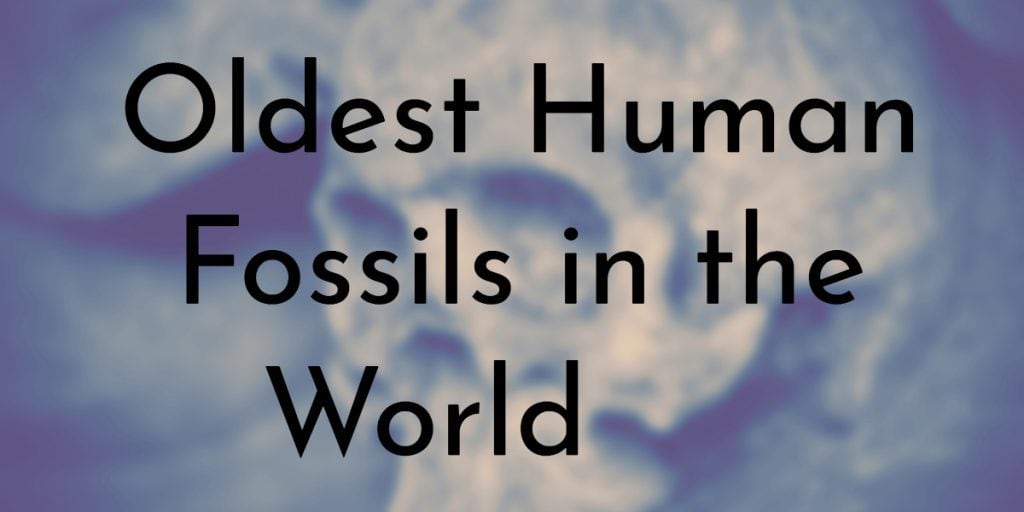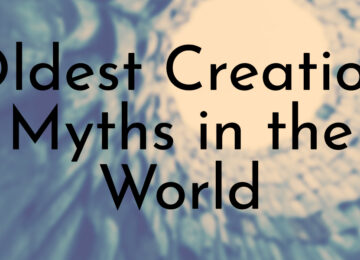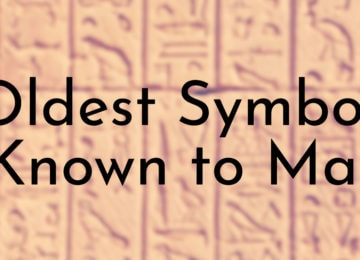Modern humans (Homo sapiens) are the only remaining human group still around. All other human species have been long extinct, but we know about them today through various fossil specimens. The first human fossils were discovered in the 19th century and were highly controversial. Early paleontologists didn’t know what to make of these fossils and often made claims that they belonged to the “missing link” between humans and apes or that they were human ancestors suffering from disease. As the paleoanthropology advanced scientists started to recognize that these fossils belonged to the our human ancestors. Some of these fossils are millions of years old and represent some of the earliest human species yet discovered.
9. Peking Man
Age: 680,000 – 780,000 years
Species: Homo erectus
Location: China
Year Discovered: 1921
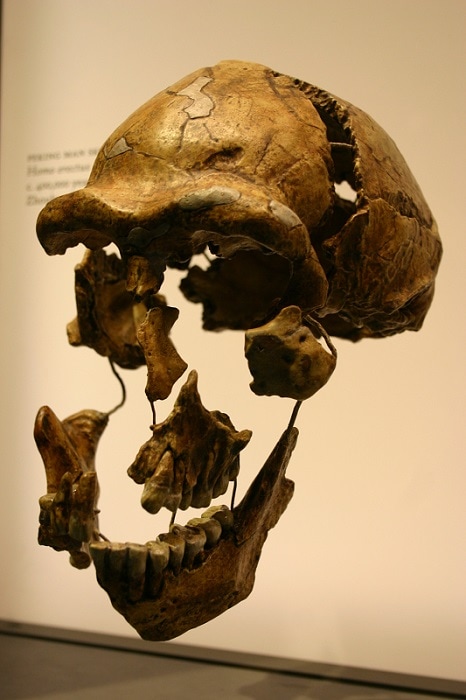
The skull fragments of the Peking Man are part of a group of fossils discovered Zhoukoudian, China during excavations from 1921 – 1937. These fossils range in age from 680,000 – 780,000 years old. Overall, 15 partial skulls, 11 mandibles, several teeth, some skeletal bones, and a large number of stone tools were recovered from the dig sites.
The fossils were extensively studied by paleoanthropologist David Blackson until his death in 1934. Pierre Teilhard de Chardin and Franz Weidenreich took over the research until Weidenreich had to leave China in 1941. Unfortunately, the original Peking Man fossils vanished in 1941 when Beijing was under Japanese occupation. The fossils have never been found despite numerous attempts. Luckily, several casts and descriptions of the Peking Man survive and four of the teeth still exist in the Paleontological Museum of Uppsala University.
8. Java Man
Age: 700,000 – 1 million years
Species: Homo erectus erectus
Location: Indonesia
Year Discovered: 1891
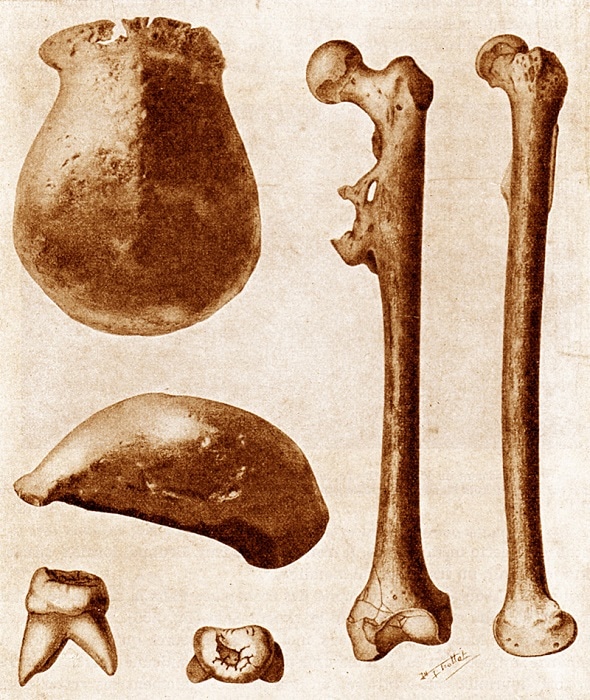
As one of the first major human fossil finds from the late 19th century, the Java Man is a widely known early human specimen. The molar, skullcap, and thigh bone of the Java Man were discovered by paleoanthropologist Eugène Dubois. Dubois claimed that his discovery represented the “missing link” between apes and humans and classified it as Anthropopithecus erectus (an outdated classification).
Within a decade of the Java Man’s discovery, several books and articles were published about Dubois’s find. The Java Man was controversial, with many arguing that it did not represent the transitional form between humans and apes. Evolutionary biologist Ernst Mayr reclassified the Java Man as Homo erectus in 1950. During the 1970s, some scientists started distinguishing the Java Man from other Homo erectus populations by labeling the specimen as Homo erectus erectus.
7. Mojokerto Child
Age: 1.43 – 1.49 million years
Species: Homo erectus
Location: Indonesia
Year Discovered: 1936
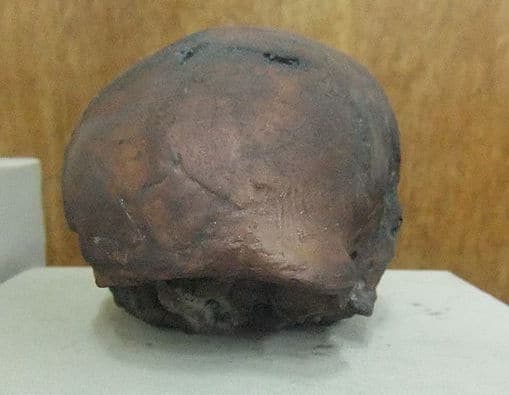
The fossil known as the Mojokerto child is a skullcap from a Homo erectus juvenile found in Indonesia. At the time of the fossil’s discovery in 1936, Ralph von Koenigswald classified the skullcap as Pithecanthropus modjokertensis but soon renamed it Homo modjokertensis. Neither of these classifications is correct or recognized today and the specimen is widely believed to be Homo erectus.
Initially, the Mojokerto child skull was hard to date because its exact discovery site could not be determined. In the early 1990s, the fossil was dated to 1.81 million years ago, with a margin of error of plus or minus 40,000 years. The skull was more precisely dated to between 1.43 – 1.49 million years in 2003 – this estimate is now widely accepted.
6. Turkana Boy
Age: 1.5 – 1.6 million years
Species: Homo erectus
Location: Kenya
Year Discovered: 1984
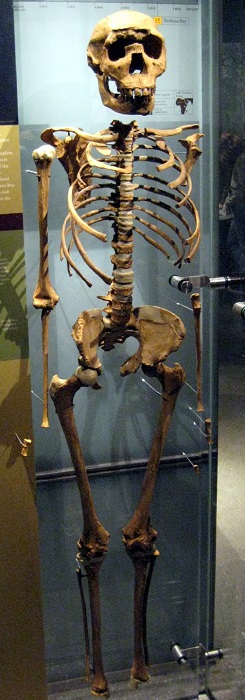
The Turkana Boy, scientifically known as KNM-WT 15000, is notable for being the most complete early human fossil ever discovered. The near-complete skeleton was discovered in 1984 by Kamoya Kimeu, a member of Richard Leakey’s research team. The fossil is estimated to be between 1.5 – 1.6 million years old.
Researchers estimate that the Turkana Boy was about 7 – 11 years old at the time of death. He was about 160 cm (63 in) tall and may have been nearly fully grown despite his young age. Scientists believe that he would have had a much smaller and briefer growth spurt than modern humans. The Turkana Boy also had a narrower pelvis which suggests he was completely bipedal – this differs from other early hominin species which still climbed trees and were only partial bipedal.
5. Dmanisi Skulls
Age: about 1.8 million years
Species: Homo erectus georgicus
Location: Dmanisi, Georgia
Year Discovered: 2001 – 2005
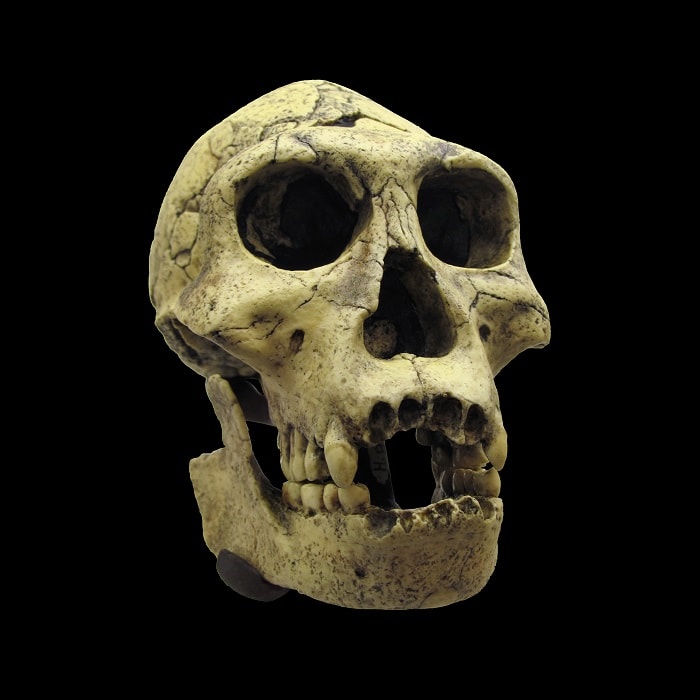
The five skulls found in Dmanisi, Georgia are some of the oldest fossils belonging to the Homo erectus line. The most notable skulls, known as skull 3, 4, and 5, were discovered in the early 2000s. These skulls are smaller than other Homo erectus skulls and have now been classified as a subspecies called Homo erectus georgicus.
A study published in 2013 describing Dmanisi Skull 5 reopened the debate over how to classify early humans. The skull is one of the oldest nearly complete human skulls ever discovered. The scientists from the study believe that Homo habilis and Homo rudolfensis were not separate human species but subspecies of Homo erectus. However other scientists do not believe the reclassification is necessary.
4. Twiggy (OH 24)
Age: 1.8 million years
Species: Homo habilis
Location: Tanzania
Year Discovered: 1968
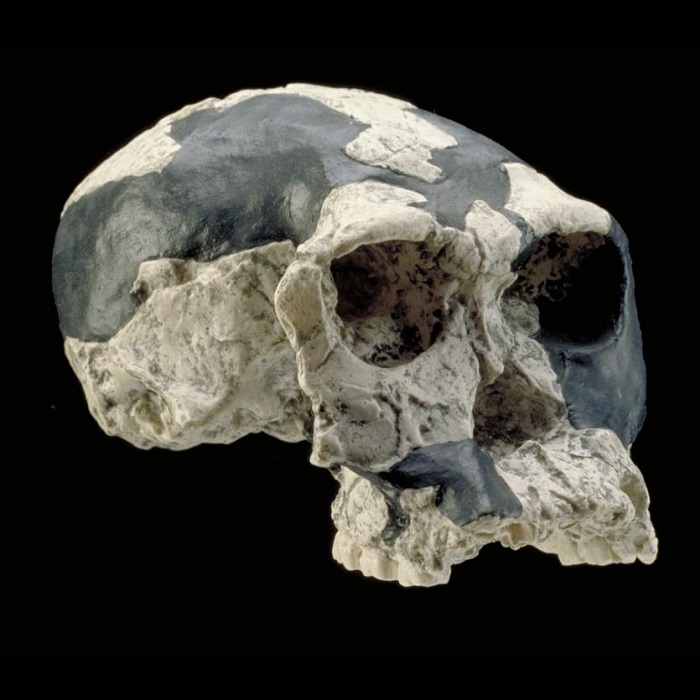
Twiggy (OH 24) is the oldest fossil skull recovered from the Olduvai Gorge paleoanthropological site in Tanzania. The skull is also one of the oldest known Homo habilis specimens. Twiggy was discovered in 1968 and was crushed flat, hence the nickname after supermodel Twiggy who was known for being thin.
When OH 24 was first discovered, there was very little interest in the skull. Scientist Ron Clarke pushed for the skulls reconstruction and it was finally examined. Unfortunately the skull was distorted from the way it was preserved and it has a slightly small cranial capacity compared to typical Homo habilis skulls. Due to OH 24’s age, the skull is often used to help settle disputes about how to properly classify Homo habilis and Homo rudolfensis skulls.
3. KNM ER 1470
Age: 1.9 million years
Species: Homo rudolfensis
Location: Kenya
Year Discovered: 1972
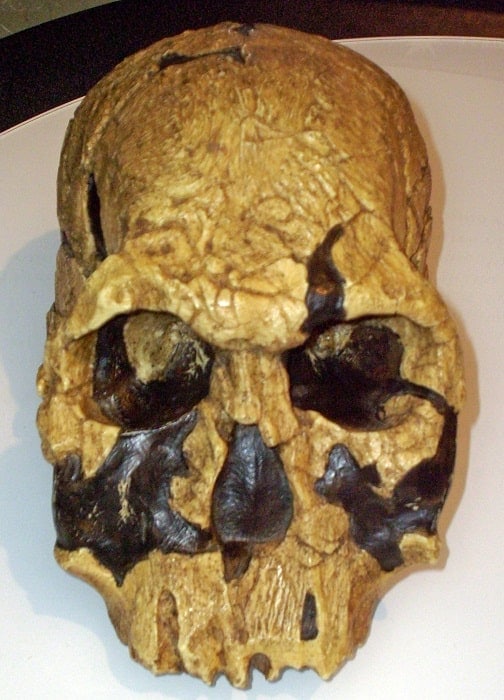
When the skull fossil known as KNM ER 1470 was first discovered, it was incorrectly dated as being nearly three million years old. This predated Homo habilis, which the skull was initially identified as. However KNM ER 1470 was properly dated to about 1.9 million years and classified as belonging to a separate human group, Homo rudolfensis, which lived in the same area and time as Homo habilis.
KNM ER 1470 was discovered just a year before KNM ER 1813, which is one of the oldest Homo habilis specimens. After KNM ER 1470 was reconstructed by Meave Leakey and Bernard Wood, they discovered that the skull was too large and too different to belong to Homo habilis. The skull was reconstructed more precisely in 2007 and it is now widely accepted as a Homo rudolfensis specimen.
2. KNM ER 1813
Age: about 1.9 million years
Species: Homo habilis
Location: Kenya
Year Discovered: 1973
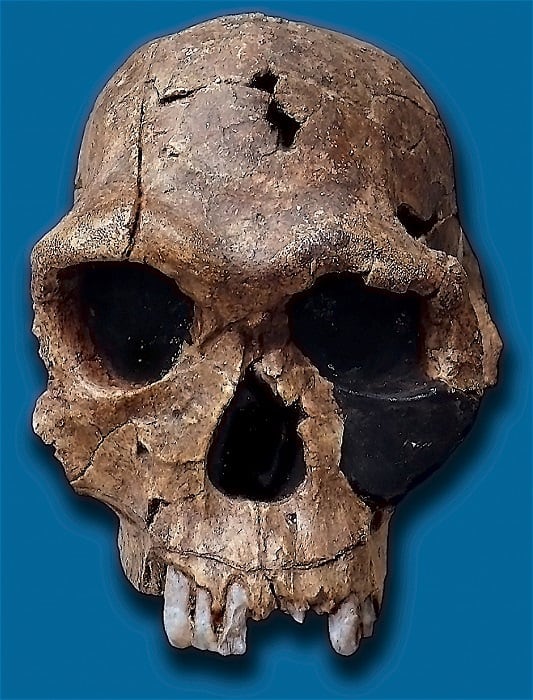
The human fossil known as KNM ER 1813 is one of the oldest and most complete Homo habilis specimens ever discovered. The skull fossil was uncovered in 1973 in Kenya by Kamoya Kimeu, who worked with famed paleontologists Meave Leakey and Richard Leakey.
KNM ER 1813 is often noted for being a controversial Homo habilis specimen due to its small size. Unlike other Homo habilis skulls, KNM ER 1813 only has a cranial capacity of 510 cubic centimeters – the accepted cutoff for Homo habilis skulls is 600 cubic centimeters. Additionally, the skull’s overall size and teeth are much smaller than those found on other Homo habilis skulls. Despite all the difference, KNM ER 1813 has enough Homo habilis characteristics to be classified as belonging to the species.
1. UR 501 Jawbone
Age: 2.5 – 2.3 million years
Species: Homo rudolfensis
Location: Malawi
Year Discovered: 1991
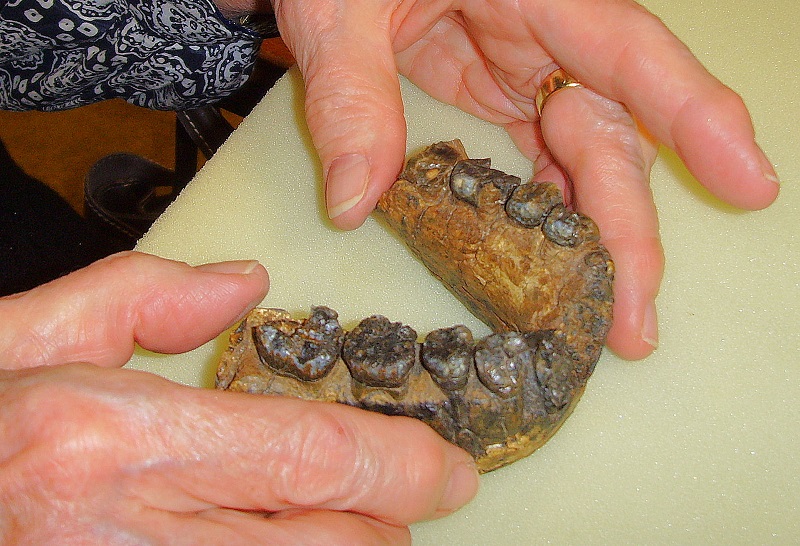
The jawbone found at the Uraha Hill paleoanthropological site in Malawi is the oldest known human fossil in the world. The exact age of the jawbone is unknown but is estimated to be around 2.5 – 2.3 million years old. This ancient jawbone belonged to a human from the Homo rudolfensis group and is considered the oldest specimen from the genus Homo.
When the jawbone was first discovered in 1991, scientists thought that it belonged to another early human ancestor, Homo habilis. However researchers later decided that the jawbone belonged to Homo rudolfensis because it was too different from specimens from other early human groups. The discovery of the jawbone also shed more light on how early human may have migrated throughout Africa.


